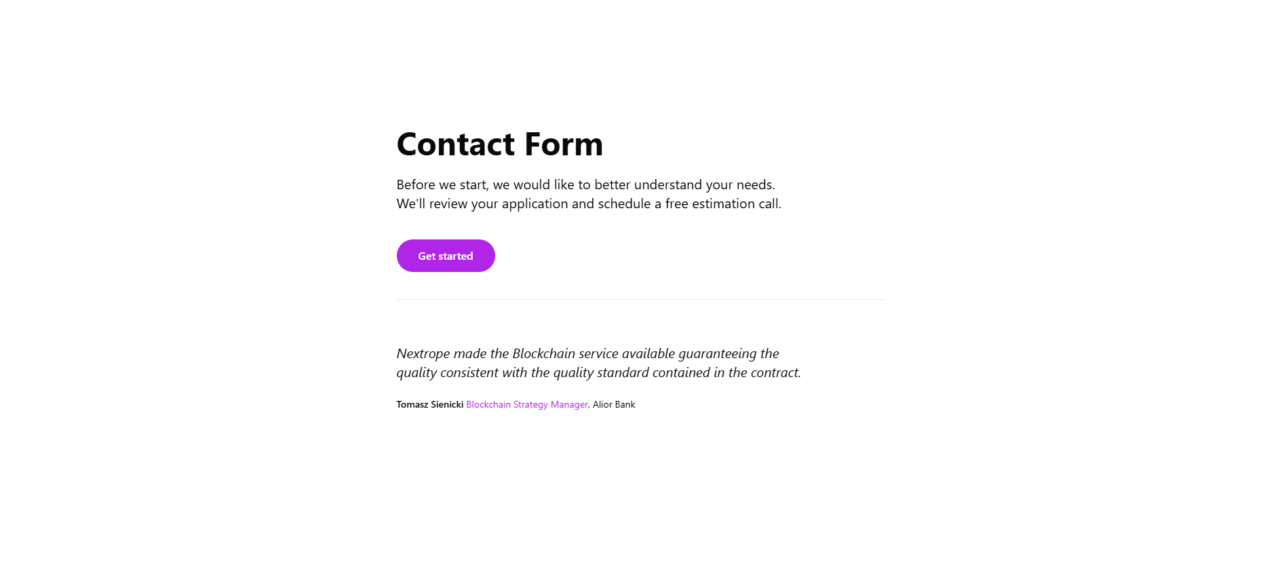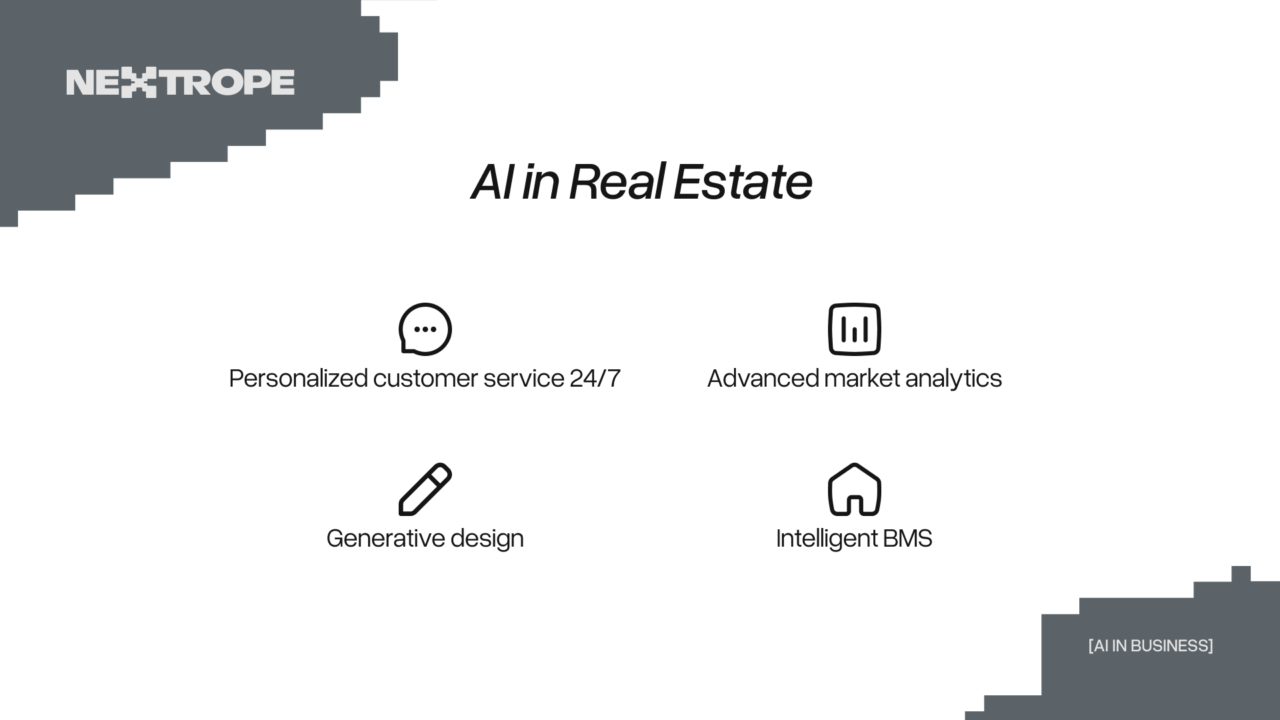We interviewed Maciej Jędrzejczyk, CEE Blockchain Leader in IBM about the future of blockchain and why this technology should adapt to business and not the other way round
You often highlight the fact that the blockchain should leave its comfort zone and integrate with the processes which are present in business. Where do you think it would be most suitable?
First and foremost in the places where the trust between the participants of the business process is limited and which creation could lead to significant reduction of costs. Lets take a look at syndicated loans. They require the participation of more than one member who is a creditor in a major undertaking, for example: structural investments. Traditionally, those types of processes between the participants of the consortium occurred relatively rarely and even if they took place they happened through a more traditional “paper form” way. The risk derived from the lack of trust between the participants had to be included in he additional operational costs, effectively lowering the profit of such initiative.
When blockchain aids our endeavours, there exists a way to overcome the distrust between the parties by trusting the automated protocol which essentially exists “below” the process. Within the context of the aforementioned example, the protocol allows us to safely and undeniably exchange the data about the responsibilities of the participants and how much money did they use on credit. In case of any disputes, this allows for quicker and more reliable way of finding and identifying the data needed to identify the party responsible for telling lies or the one having to pay the fine. So, naturally, this solution is much cheaper, considering that you would need to hire an additional arbiter to be the trusted third party if you chose to follow the traditional forms of exchanging the data. This could also let the participants avoid the potential cases in the court in case of ignition of a conflict.
Would you be able to identify a brand where there is the biggest need of solving this limited trust problem?
The problem of lack of trust exists everywhere and no brand requires more help than the other ones. We live in the reality where people don’t trust each other which makes us create third party institutions which we give that trust instead. We lend them our data about our identity and assets because we want to be able to achieve a common goal, create an added value. If want to be capable of generating the trust in a cheaper, simpler way, then blockchain is a perfect solution.
Do you think that the blockchain solution offered by the IBM is financially viable for smaller and bigger companies?
To answer that we would have to look into the needs of the individual client. IBM offers the IBM Blockchain Platform, based on the Hyperledger Fabric, which is a highly developed blockchain protocol of the permissioned type - the one that allows for the control of access to the business network to all of its participants. IBM Blockchain Platform adds an element of support and upkeep of the enterprise class, full compatibility of the Hyperledger Fabric protocol with the containerisation platform Kubernetes and a convenient interface of automatization of business activities associated with the upkeep of business networks based on blockchain. Its essential for the companies, because the implementation of the system of production always comes with a need of an assumption of the potential risk coming from, for example, the potential downtime of applications used to support the business. If the company or the consortium decides to utilise IBM, it will receive the support needed to maintain the stability and availability of the application. Its also important to notice that the IBM Blockchain Platform can be shared in the as-a-Service model on IBM Cloud or as its full set of software, which can be installed in any IT infrastructure. As a result, it gives a full flexibility in terms of requirements of the territoriality of data, technological preferences of the members of the business network or the assurance of being able to keep the cryptographic keys in the controlled environment. Is that a cheaper solution? If this is a matter dependent on the choice between a centralised database or a more scattered solution, this matter should be analysed with a reference to its usage. In case of choosing between the different blockchain protocols, TCO must contain not only the expected functionality but also the accessibility of the technical support, the costs of training the personnel and the costs of risk mitigation. The last element is key when we need additional privacy protection.
Will the price of the upkeep of such a solution be reduced or increased over time?
I think that it will decrease over time. It will be so because the cost of such a solution is low in comparison to the benefits it brings and because of the increasing value of the transactions that will be saved on it. Right now we are at the stage where many institutions and commercial entities are still at the stage of experimentation of creating the new business services with the usage of blockchain. As a result the value of the transactions registered in the blockchain is still yet to be measured. However, if we reach the moment where we will record the transactions describing, for example, debentures or other financial instruments worth millions, then the safety that blockchain assures will be relatively cheap in reference to the value generated by the transaction
There exist projects connected with the Hyperledger. Which ones should we pay the most attention towards?
Hyperledger is the organisation which gathers the open source community in the context of using the blockchain technology in business. At the moment there exist dozens of projects carried out by this community which is aided by the commercial entities like IBM. Our company actively assists the growth of the Hyperledger Fabric protocol and large amount of projects carried out by our company uses this technology. In its current stage, Hyperledger Fabric is a mature protocol with three years of history and its ready for its utilisation in the production. What is more, many blockchain projects, carried out independently from the IBM is based on the Hyperledger Fabric.
Would you be so kind to share with us some of the examples of such projects?
As far as IBM is considered, we can boast about the we.trade platform which works in the context of trade finance. It reduces the transaction costs dramatically between the small and medium companies which want to sell the goods in Europe. As of now there is 14 commercial banks who joined the platform and provide this service to their clients. As a result, small and medium companies could acquire the accreditive cheaper than ever and acquire the security before the product is sent to the contractor who is yet to be known.
Other example could be the IBM Food Trust platform which is used for the food tracking. With the use of the GS1 standard and the blockchain it allows the full access to every part of food production and all of the sides engaged in the products’ lifetime, beginning with the producers, through the transporters and ending on the consumers.
Do you think that besides the IBM there exists the projects that are worth paying attention towards?
Undoubtedly, the worlds bigger than the IBM after all. One could mention the efforts of companies such as R3 or Consensys, which carry out very interesting projects in the areas of the financial sector. It is worth mentioning that despite the huge element of competitivity in this sector, both of those companies are a part of the Hyperledger community and conjointly carry out many operations. It is worth mentioning that in Poland, Alior Bank has implemented the “durable medium” which it based on the blockchain platform of the public Ethereum. PKO Bank Polski also incubates many ideas which could be implemented with the usage of blockchain as a part of cooperation with the Lets Fintech start-ups. Many of the practical ideas with the usage of blockchain are contemplated as part of the blockchain working group in the Ministry of Digitalisation or the Polish Informatics and Telecommunication Association. Year 2020 will bring us many more example of the usage of blockchain in the public use. The preview of such a trend was presented in the news published during the ImpactCEE 2019 conference, where the members of Polish KIR and UKNF informed about the creation of the open source technological blockchain sandbox which is going to allow the companies and the start-ups to create the business solutions and the acceleration of the ideas based on this technology.
How would you rate the Hyperledger environment and its organisation?
I think that as an organisation it is doing very well. It’s an extremely dynamic open source based community, which engages in blockchain. In my opinion its trying to be the most neutral one of its kind. But most importantly its keen on the business. Every project undertaken by Hyperledger is based on the Apache 2.0 licence, which allows for almost limitless usage of the code for the commercial usage. It is very important for the companies which do not only base their value on services or products, but also on creating new components, modules to existing solutions, which remain their intellectual property.
Overall, Hyperledger operates like every open source organisation, which seeks solutions for specified business cases, but not the other way round – expects that the business is going to adapt to it. Most of its members are companies which both develop their projects and are their main consumers. Each and every one of the projects prepared by Hyperledger must undertake a rigorous process of acceptance, which verifies that the implementing team is going to complete the project and assures that after its completion is going to find the support and look for the sponsors.
About the community, how does IBM support the start-ups?
We have many different programmes of cooperation. Most importantly the ones concerning our usage of our cloud storage. It usually allows the start-ups to gain some credits, which allow them the consumption of the calculating resources on the IBM Cloud. We also carry out different, non-standard methods of cooperation. Depending on the project, its business character, the cooperation can take many forms. Its usually the partnership where the given start-up brings a component of a more complex solution, which is highly significant from the perspective of the business. Then, IBM can see the sense in creating an added value. I guess we can say that we cooperate with the startups and help them develop using our own resources, knowledge and our contact network from many different domains.
At which stage of developing the blockchain technology is Poland?
First of all, we must differentiate two things – most importantly what are the basic examples of the usage of blockchain. First are, of course, the cryptocurrencies and investment products, and on the second one blockchain as a communication protocol in a untrustworthy environment made from many parties. On one hand our market already knows how the administration can handle the requests about the approval of existence of products, but on the other, the usage of blockchain in solving the business problems is yet to be unseen from the judicial perspective. Its kind of a good sign for me, as I believe that the less regulations exist, the easier it is to implement the technologies on your own.
In one of your articles you deducted that 2019 shall be the year of the settlement of the bills, retreat of the investors. In your mind the institutional investors were supposed to slowly shy away from the modern technologies. You said they would choose more traditional ways of investments rather than implementing the unconventional projects with blockchain and start-ups. They would follow a more stable, familiar way. The end of 2019 draws near, has your prediction come true? If yes, then what are the consequences it brings into the markets?
Yes, it did come true. As a result, now we are more aware of the problems we may be facing. The hype is simply gone. In my opinion we can wholeheartedly agree that nobody will invest his money only when hearing the word #blockchain written on the prospect or the documentation. The overreliance on the hype has lead many companies to failure in the test of time. If they won’t try to develop more constructive value and products/services they will simply cease to exist.
What was the reason for the overwhelming hype concerning the blockchain?
Blockchain is a young technology, it has a little over 10 years and the market might still not be mature enough to embrace it. We are facing the same period that the internet was at its infancy. A great technology just awaits to be introduced at the right moment. Long years will pass until we reach the moment when the blockchain will be welcomed by the mainstream. However, one day it will be our bread and butter in the technological foundation of the modern processes. I wish for such a future to You and all of our readers.
 en
en  pl
pl 












